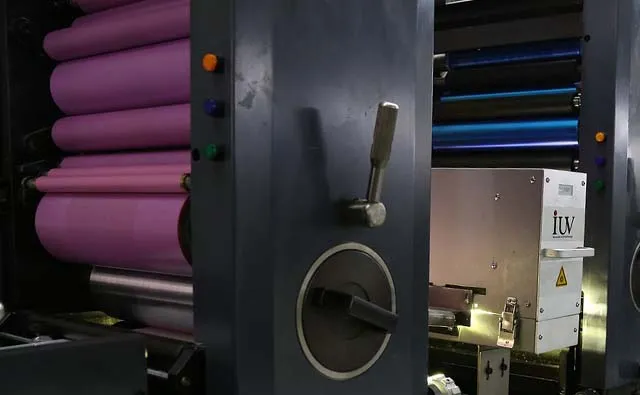Industry News, Inks
A Top-Down Review of European Ink Trends

Industry News, Inks

At the summit of the European printing ink sector has been the news that the European Printing Ink Association (EuPIA) appointed a new director in the spring of this year: Cornelia Tietz – a woman who brings a wealth of experience to EuPIA.
For the past seven years, she has served as the secretary-general of ESIG, the European Solvents Industry Group, and its sector association. Her career in Brussels spans almost two decades, during which she held various positions in Cefic and ReachCentrum.
“It’s a great honor and for sure a challenge to take over from Martin Kanert, who has been the driving force of EuPIA for so many, many years. I am truly looking forward to embark on this new and exciting journey together with the EuPIA members and the CEPE team,” she said upon assuming her new role.
Under her leadership, EuPIA is expected to demonstrate a strong commitment to sustainable innovation and will ensure that EuPIA remains at the forefront of promoting sustainable practices in the European ink industry. These will undoubtedly be positive and welcome trends in an industry where there has been some recent decline.
The annual figures on the performance of the European ink industry for 2023 have been collated and published by EuPIA and these represent 90% of the total industry figures. The collective statistics do not make for exciting reading, with total sales volumes falling to 700,000 tons.
The volume of packaging inks sold fell by 6.9% between 2022 and 2023 to a total of 490,000 tons. There was an associated decline of 6.6% in value terms to €2.1 billion. The packaging ink segment encompasses flexographic inks, specialty gravure inks, energy curing inks and related varnishes.
The volume of publication inks sold fell by 15.7% between 2022 and 2023 to a total of 210,000 tons. The fall in sales value in this sector was 11.5%, placing the yearly figure for 2023 at €700 million. Publication inks count among them web offset inks (coldset and heatset), sheetfed offset inks, publication gravure inks and related overprint varnishes.
The performance of the individual national industries is inevitably varied. The following bullets summarize their performance in terms of value:
All the big five economies in Western Europe showed shrinking overall sales. Germany and the UK both demonstrated sales falls of 9.6%, with Italy and France not far behind that. Of the big five, Spain showed the smallest decrease at 3.4% in 2023.
Turkiye was the only major economy to demonstrate an increase in ink sales, this amounting to a 2.8% increase to about €280 million.
Russia suffered a collapse in ink sales amounting to more than 40%, leaving annual sales there at about €47 million.
Most of the smaller economies in Eastern Europe recorded gently declining sales, but some bucked the trend: Belarus (up by 38%), Ukraine (19% higher), Bulgaria (7 % higher) and Romania (up by nearly 2%).
The availability of several years of annual sector and sales statistics provides an opportunity to track the long-term trends of the ink industry, in which packaging is seen holding up better on the back of e-commerce, while publication ink volumes have fallen by 43% over the last five years (first chart). The ups-and-downs of the value of ink sales year-on-year is also plotted (second chart).
One of the key emerging technologies in 2024 is that of artificial intelligence, and more accurately, that of generative artificial intelligence. The former has been around for many years as a matter of machine-learnt patterns of behavior that replicate the human mind, its logic, and one of the options that arrives with it is the calculation and prediction of properties and structures associated with formulated products that are required to be high-performance.
A key application area in this regard is future ink formulation, especially when viewed through the lens of sustainable design. This holds considerable promise for the continued greening of the ink sector through optimizing formulations and predicting their individual environmental impacts.
Other opportunities for AI in the print sector include predictive maintenance and enhanced design to minimize waste (and drive profit!)
Generative artificial intelligence has caused a big buzz in industry this year because it raises the spectre of job losses through its enormous creative potential with graphic, video and copy generation.
Having attended the BCF’s Annual Conference in May this year, I learned that one of the surprising aspects of this area is that although AI may be perceived as a threat, it will actually create jobs where people will need to be familiar with how to work with the technology anyway. This is seen as a potentially attractive move for the recruitment of younger people into industry.
It’s clear that there is considerable potential for AI in both the realms of ink and printing and the recent drupa 2024 show elicited a few interesting debuts from companies targeting these sectors:
Using AI, Fiery Inkwise can predict when and how much ink should be ordered to optimize inventory levels; it also prepares job tickets by analyzing jobs and considering media selection, prepress process, finishing and so on. Additionally, Fiery JobFlow prepress workflow software was also debuted at drupa. This software automates job preparation steps and prepare files for print with less manual input.